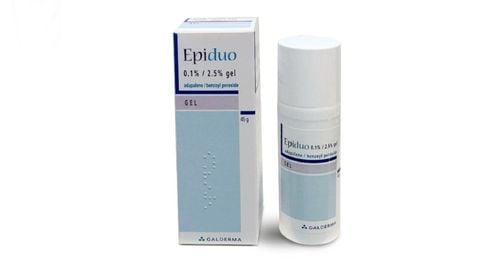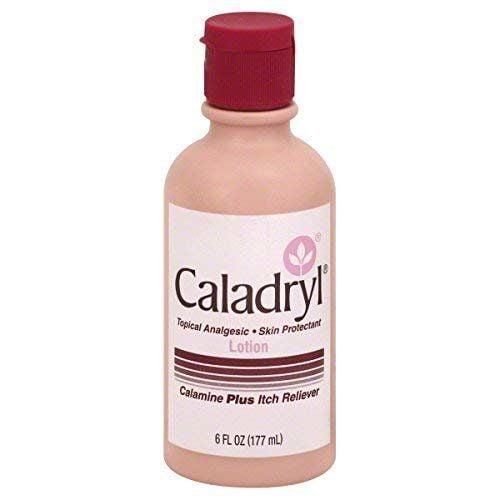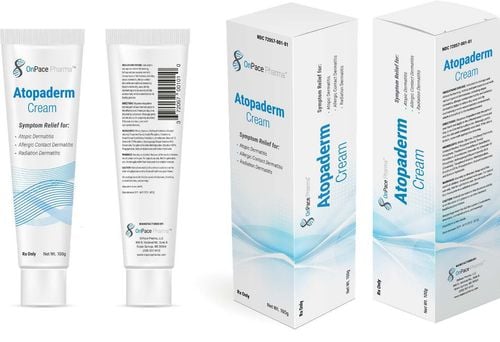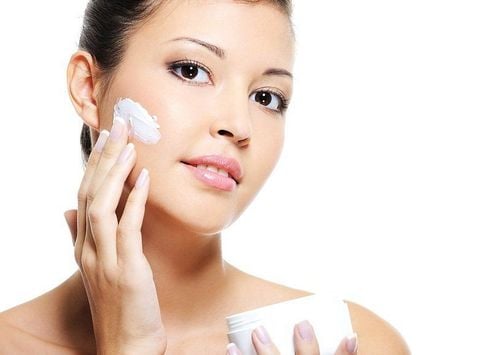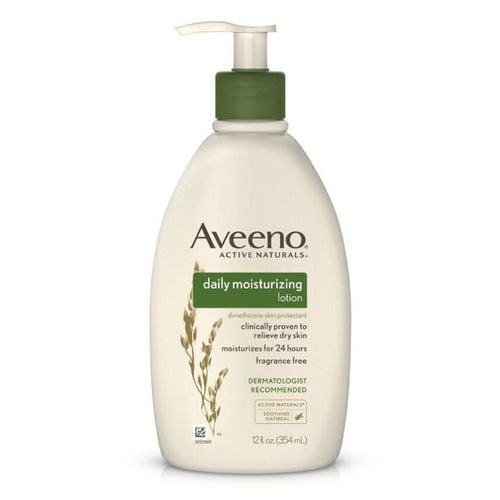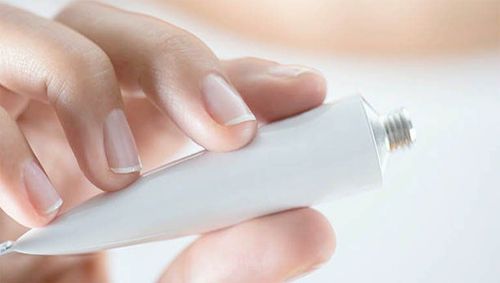This is an automatically translated article.
Skin is the largest organ of the human body, with an average size of 1.7 square meters in an adult. Using a large portion of the skin as a route of absorption of topical drugs to deliver drugs into the body is not a new concept. In fact, this approach still maintains a lot of advantages, and advances in modern science offer more and more potential benefits over traditional routes of administration.
1. Medicines for external use
1.1. Skin medicines
A group of topical medications that are used topically to relieve pain, reduce swelling, or prevent infection. From the earliest recorded history, the ancients knew how to use poultices from medicinal plants to wrap wounds and relieve pain. Today, gels, creams, foams, and ointments are forms of medicine that are applied directly to the site of treatment. Not only that, antibiotics, anti-bacterials, anti-inflammatory drugs and others can also be applied topically, targeting the nerves involved without going through the digestive system or significantly affecting the circulatory system. general circulation.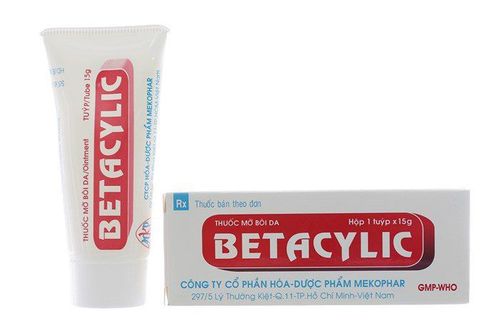
Thuốc mỡ Bentacylic là một loại thuốc bôi ngoài da điều trị viêm da
1.2. Drugs that penetrate the skin
Transdermal drugs are also a form of drugs for topical use, usually in the form of patches, more modern and have a more complex route of action than topical drugs. The first transdermal drug, scopolamine for the treatment of motion sickness, has long been used, seen as a major step forward in transdermal delivery, marking a milestone that has been made since from that.On the other hand, percutaneous drug delivery systems can also deliver drugs through the skin from outside the application site into the bloodstream. Once in the bloodstream, the ingredients will circulate and work at a targeted site, such as the brain, central nervous system, heart,... The drug is evenly distributed and can be stopped by by simply removing the tool or the sticker. Because the body doesn't have to digest the drug through the stomach, more of the drug reaches the bloodstream and there is less risk of side effects.
2. Mechanism of action of topical drugs
The mechanism of action of topical drugs is promoted in many different ways, based on the appropriate dosage forms. Thanks to the choice of means of drug delivery, depending on the anatomical site to be treated and the condition of the skin, topical drugs will achieve the most optimal mechanism of action, providing a high therapeutic effect. while ensuring safety, minimizing unwanted effects for patients.2.1. Ointment
Ointment is a semi-solid dosage form consisting of lipids, such as white soft paraffin BP, which has emollient and emollient properties. Some ointments contain additional emulsifiers such as polyhydric alcohol (macrogols, polyethylene glycol) or cetostearyl alcohol. This type has the advantage of being less greasy, has solvent properties, has a mechanism of action that penetrates the skin and is easily washed off.
Ointments are a form of topical medication that requires very few preservatives than other forms because they do not contain water and do not maintain a favorable environment for microbial growth.
SEE ALSO: Antibiotic ointment applied to the skin: Do not arbitrarily
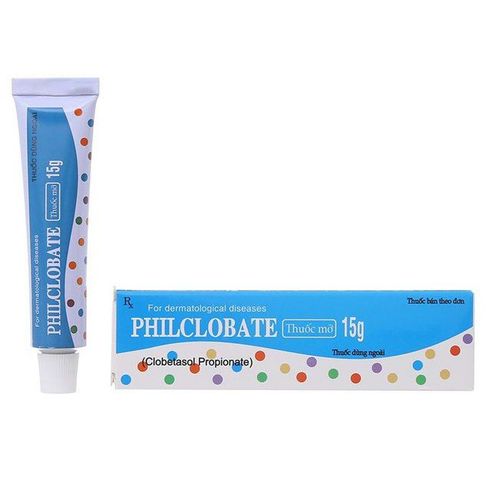
Thuốc mỡ bôi ngoài da philclobate
2.2. Moisturizing cream
This is a semi-solid emulsion containing both lipids and water. This preparation can be presented as a water-based cream or a melt-in cream, which is miscible with water, providing gentle cooling and providing a good absorption mechanism into the skin, promoting local action.Another is a water-in-oil cream, which cannot be mixed with water and is more difficult to wash off. Mechanism of action of this form as an emollient, lubricant and mildly occlusive (but less so than ointments).
2.3. Dough
Pastes are semi-solid preparations containing a proportional composition of a fine powder material such as zinc oxide or starch. The paste is greasy, insoluble in water and also has a good absorption mechanism into the skin.
Accordingly, this dosage form is used as a means to cover, protect and moisturize a certain area of the skin. Sometimes the texture of the paste can be "softened" by adding oil or "hardened" with hard paraffin.
2.4. Lotion
These are liquid preparations, usually a simple suspension or solution of the drug in water, alcohol, or other liquids. These types often contain alcohol, so they will sting, especially when applied to damaged skin.When applied on the skin, the mechanism of action of the lotion is through the rapid evaporation of the liquid that acts as a solvent, leaving a film of medicine on the surface of the skin. Therefore, sometimes these two ingredients can separate when the vial is left alone for a long time, requiring the user to shake before each use.
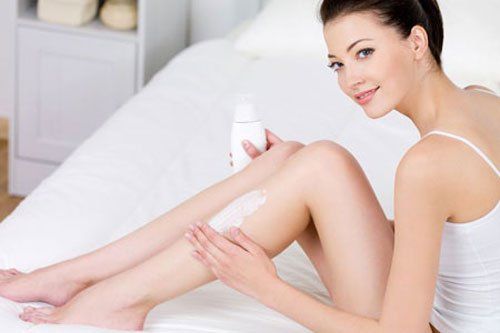
Kem dưỡng da giúp cấp ẩm và làm mịn da
2.5. Types of gels
Gels can be considered as thick creams. They are semi-solid preparations containing polymeric polymers, such as carboxypolymethylene or methylcellulose.Creams and gels with a mechanism of action are especially suitable for the treatment of diseases of the scalp and other hairy areas in general. Like lotions, gels tend to dry out when left on the skin. In addition, gels can also be formulated as specialized formulations for use on hairless areas.
SEE ALSO: Note the use of topical medications for people with hand, foot and mouth disease
2.6. Flour
Topical drugs can also be prepared in the form of a dusting powder. The mechanism of action of this form of preparation is to help reduce friction (talcum powder) or improve excessive moisture (hygroscopic powder). Moreover, this form of preparation is sometimes chosen to make medicines such as antifungals applied to the foot area.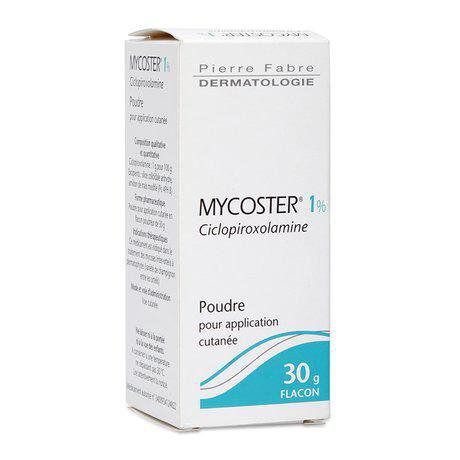
Thuốc bột điều trị nấm kẽ chân Mycoster
2.7. Paint
Paints are liquid preparations, which can be aqueous or alcohol solutions. The mechanism of action of this form of preparation usually requires the use of suitable tools such as a skin brush or a spray tube that creates a mucous membrane and then evaporates quickly, leaving a layer of medicine on the skin to be treated. treat.3. Advantages of using topical drugs
Some of the advantages of using the group of topical drugs are as follows:
Provides rapid local action Limit adverse effects on other organs if administered through the system Has a key position in the treatment Treatment of diseases where drug levels need to be maintained continuously and stably in the body such as pain control, smoking cessation or stimulants, diabetes, etc. medication can be continued In unconscious patients - a patch can be easily applied (or removed) as needed Convenient to use for patients where adherence can be a problem towel. In short, dermatologists are fortunate to work on the body's most accessible organ. This brings many advantages in the research and application of topical drug classes. Since then, patients receive more benefits in the treatment of skin diseases and other systemic diseases, as the mechanism of action of topical drugs becomes more and more effective.
Please dial HOTLINE for more information or register for an appointment HERE. Download MyVinmec app to make appointments faster and to manage your bookings easily.
Reference sources: onlinelibrary.wiley.com, participantskc.altasciences.com




